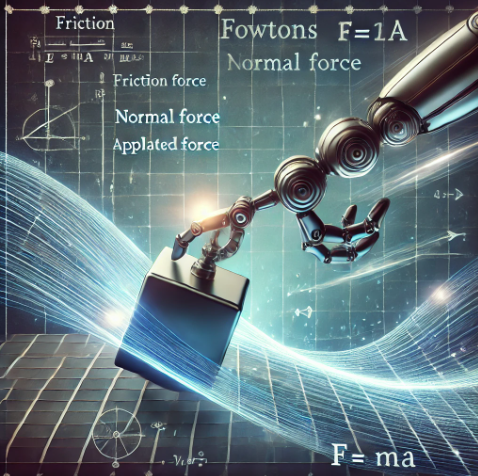Unit 2 Overview: Dynamics in AP Physics 1
What is Dynamics?
Dynamics is the branch of physics that deals with forces and their effects on motion. It goes beyond describing how objects move (as in kinematics) to explaining why they move. Forces are vector quantities, meaning they have both magnitude and direction. Understanding dynamics allows us to analyze interactions, predict motion, and explore real-world phenomena through the lens of physics.
Key Concepts of Dynamics
1. Defining a System ⚙️
In dynamics, it is essential to define a system, which refers to a portion of the universe selected for study. Everything outside this system constitutes the surroundings. Systems can be categorized as:
- Closed Systems: Exchange energy but not matter with their surroundings.
- Open Systems: Exchange both energy and matter.
- Isolated Systems: Do not exchange energy or matter.
- Conservative Systems: Total mechanical energy remains constant.
- Non-Conservative Systems: Total mechanical energy changes due to external forces.
Example: A pendulum swinging in an air-tight box can be considered a closed system if we only analyze its energy exchanges without external influence.
2. Forces in Dynamics
Types of Forces 💪
Contact Forces: Occur when two objects physically touch.
- Normal Force (N): Exerted perpendicular to a surface.
- Tension (T): Force transmitted by a string, rope, or cable.
- Frictional Force (f): Resists relative motion between surfaces.
- Spring Force (F_s): Follows Hooke’s Law ().
Non-Contact Forces:
- Weight (W): The gravitational force acting on an object (
Example: Pushing a box on a rough surface involves friction opposing motion, while weight acts downwards and the normal force pushes upward.
3. Free-Body Diagrams and Net Force Equations
Free-Body Diagrams are essential tools that visually represent the forces acting on a system. To create one:
- Draw a simple shape representing the object.
- Use arrows to show all acting forces, ensuring correct direction and magnitude.
- Label all forces (e.g., , , ).
The net force () is calculated by summing all force vectors. The net force equation relates to Newton’s Second Law:
Where:
- : Net force (N)
- : Mass (kg)
- : Acceleration (m/s2)
4. Newton’s Laws of Motion
Newton’s First Law (Law of Inertia)
An object remains at rest or in uniform motion unless acted upon by an unbalanced force.
Newton’s Second Law (F = ma)
The acceleration of an object is directly proportional to the net force acting on it and inversely proportional to its mass.
Newton’s Third Law (Action-Reaction)
For every action, there is an equal and opposite reaction.
5. Special Cases in Dynamics
Atwood’s Machine
This system typically involves a pulley with two masses connected by a string. Analyzing this setup requires applying Newton’s Second Law to each mass and considering tension forces.
Apparent Weight
The apparent weight of an object differs from its actual weight when subjected to vertical acceleration, such as in an elevator. This arises due to the imbalance between gravitational and normal forces.
6. Applications of Newton’s Laws
Newton’s laws are used to analyze motion in various contexts:
- Understanding Object Behavior: Predict motion of cars, planes, and celestial bodies.
- Engineering Applications: Design mechanical systems like levers, pulleys, and gears.
Example Problem:
Calculate the tension in a rope holding a 10 kg mass.
Given:
Using Newton’s Second Law:
Conclusion
Unit 2 of AP Physics 1 delves deep into forces and their impact on motion, enhancing our understanding of dynamics. This foundational knowledge enables you to explore complex scenarios involving forces, motion, and interactions in the physical world.







